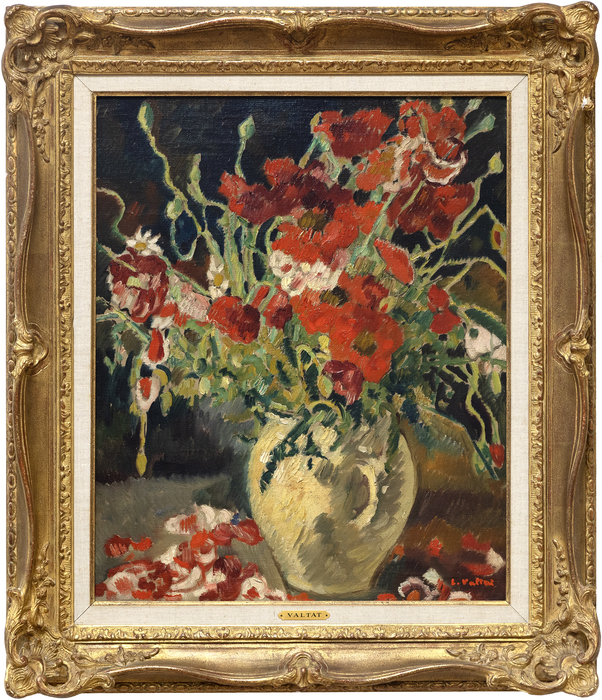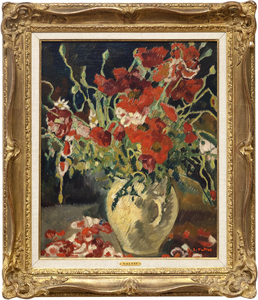LOUIS VALTAT (1869-1952)
 Louis Valtat was a French painter associated with the Fauves. Valtat is noted as a key link
Louis Valtat was a French painter associated with the Fauves. Valtat is noted as a key link
that accounts for the stylistic transition in painting from Monet to Matisse. Louis Valtat is
considered as one of the leaders and founders of the Fauvist movement (meaning "the wild
beasts" for their wild, expressionist-like use of color), which did not formally begin until 1905
at the Salon d’Automne. Valtat was involved with the most influential groups of artists, such
as Auguste Renoir, Paul Signac, Georges d’Espagnat and Maximilien Luce.
Valtat spent many of his childhood years in Versailles, a suburb of Paris, where he attended
secondary school at the Lycée Hoche. Encouraged by his father, an amateur landscape
painter himself, Valtat became interested in art, and at age 17, deciding to pursue an artistic
career, applied to the School of Fine Arts in Paris. After being accepted, in 1887, Valtat moved
to Paris to enroll at the École des Beaux Arts de Paris. After the Ecole, Valtat studied at
the Académie Julian under Jules Dupré (1811-1889), a landscape painter of the Barbizon
school. Among his fellow students were: Albert Andre (1869-1954), who became a close
friend, as well as Maurice Denis (1870-1943), Pierre Bonnard (1867-1947), and Edouard
Vuillard (1868-1940), who, at that time, were members of the Nabis movement. While Valtat
remained detached from that movement, he learned from them, the Gauguin method of
painting which would influence his later works.
Valtat exhibited widely during his career. In 1894, Louis Valtat collaborated with both Henri
de Toulouse-Lautrec and Albert André in creating the decor for the Paris theater "L’Oeuvre"
at the request of Lugné Poë. Valtat suffered from tuberculosis, and he spent many autumn/
winter seasons along the Mediterranean coast in Banyuls, Antheor and Saint-Tropez. Often,
Valtat and his family would visit Paul Signac in Bollée and Auguste Renoir at the Maison
de la Poste in Cagnes. During these times, along the Mediterranean, Valtat’s use of color
became a major concern to him, and he began to express his Fauvist tendencies, particularly
in painting seascapes.

